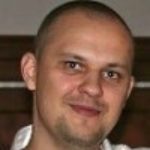Lien vers Pubmed [PMID] – 11968459
Adv Neurol 2002;89:331-59
The experiments strongly suggested that the reason why Purkinje cells die so easily after global brain ischemia relates to deficiencies in aldolase C and EAAT4 that allow them to survive pathologically intense synaptic input from the inferior olive after the restoration of blood flow. This conclusion is based on: (a) the remarkably tight correspondence between the regional absence of aldolase C and EAAT4 in Purkinje cells and the patterned loss of Purkinje cells after a bout of global brain ischemia; (b) the necessity of the olivocerebellar pathway for the ischemic death of Purkinje cells; and (c) the build-up of pathologically synchronous and high-frequency burst activity within the inferior olive during recovery from ischemia. Indeed, the correspondence between the absence of aldolase C and EAAT4 to sensitivity to ischemia could be demonstrated for zones of Purkinje cells as small as two neurons. A second finding was that Purkinje cells are not uniformly sensitive to transient ischemia, since they die most frequently in zones where aldolase C and EAAT4 are absent. One implication of the experiment is that factors beyond the unique synaptic and membrane properties of Purkinje cells play an important role in determining this neuron’s high sensitivity to ischemia. The data strongly imply that two properties of Purkinje cells that make them susceptible to ischemic death are their reduced capability to sequester glutamate and reduced ability to generate energy during anoxia. The patterned death of Purkinje cells is sufficient to induce a form of audiogenic myoclonus, as determined with a neurotoxic dose of ibogaine. Ibogaine-induced myoclonus is recognized behaviorally as a reduced ability to habituate to a startle stimulus and resembles the myoclonic jerk of rats during recovery from a prolonged bout of global brain ischemia. Commonalities of ischemia and ibogaine-induced neurodegeneration are the intricately striped Purkinje cell loss in the posterior lobe and a nearly complete deafferentation of the lateral aspect of the fastigial nucleus from the cerebellar cortex, in particular the dorsolateral protuberance. Thus, the data point strongly to a cerebellar contribution to audiogenic myoclonus. Single-neuron electrophysiology experiments in monkeys have demonstrated that the evoked activity in the deep cerebellar nuclei occurs too late to initiate the startle response (60) and electromyography of the postischemic myoclonus of rats corroborates this view (see Chapter 31) (20). However, the nearly complete loss of GABAergic terminals in the dorsolateral protuberance after Purkinje cell death would be expected to dramatically increase its tonic firing and the background excitation of the brain-stem structures that it innervates. The fastigial nucleus innervates a large number of autonomic and motor structures in the brainstem and diencephalon, including the ventrolateral nucleus of the thalamus and the gigantocellular reticular nucleus in the medulla–structures that have been implicated in human posthypoxic myoclonus (6, 7). We propose that the posthypoxic myoclonic jerk of rats is, at least in part, due to disinhibition of the fastigial nucleus produced by patterned Purkinje cell death in the vermis. The argument is as follows: the loss of GABAergic inhibition in the fastigial nucleus after ischemia leads to diaschisis of the motor thalamus and reticular formation which, in turn, is responsible for enhanced motor excitability and myoclonus. That the audiogenic myoclonus after global brain ischemia in the rat gradually resolves over a period of 2 to 3 weeks is consistent with this view, as restoration of background excitability after CNS damage in rats has been documented to occur within this time-frame (61). Our view brings together the physiologic finding that posthypoxic myoclonus appears to originate in the sensory-motor cortices and/or reticular formation with the consistent anatomical finding of Purkinje cell loss after ischemia, and explains the puzzle of Marsden’s unique cases of myoclonus associated with coeliac disease (1). Moreover, our argument is consistent with findings both in rats (62, 63) and humans (64) that damage to the vermis impairs the long-term habituation of the startle reflex. It remains to be determined whether the pathologically enhanced startle responses after vermal damage resemble brain-stem reticular or cortical myoclonus at the electrophysiologic level of analysis. What is the purpose of the regional expression of aldolase C and EAAT4 in Purkinje cells? The close correspondence between the spatial distribution of aldolase C and the parasagittal anatomy of the cerebellum (48) has led to the view that aldolase C may help specify connectivity during development. While the present experiments do not address this issue, they underscore the fact that aldolase plays a fundamental role in metabolism. Because Purkinje cells have a repressed expression of aldolase A (31), whatever role the absence of aldolase C may play during development comes at the price of metabolic frailty later in adulthood. From another point of view, aldolase C and EAAT4 appear to confer upon Purkinje cells the ability to survive their own climbing fiber. Indeed, climbing fibers form a distributed synapse that synchronously releases glutamate (or aspartate) at all levels of the dendritic tree simultaneously (65, 66). Such synchronous activation triggers calcium influx throughout the Purkinje cell dendrites at a magnitude that is unparalleled in the nervous system (12), and, thus, places an extraordinarily high metabolic demand on the Purkinje cell. The apparently reduced level of aldolase in a subpopulation of Purkinje cells provides the condition for energy failure and death during anoxia so long as the climbing fibers are intact or when climbing fiber activation is pharmacologically enhanced under normoxic conditions, such as after ibogaine (53-56). Lastly, the argument that diaschisis produced by patterned cerebellar degeneration leads to thalamo-cortical and reticular hyperexcitability agrees with C. David Marsden and his colleagues’ bold demonstration of an inhibitory influence of cerebellar cortex on motor cortex in humans (67). Our anatomic data indicate that the spatially distinct zones of Purkinje cells, which are killed by global brain ischemia, may be the origin of such inhibition.

